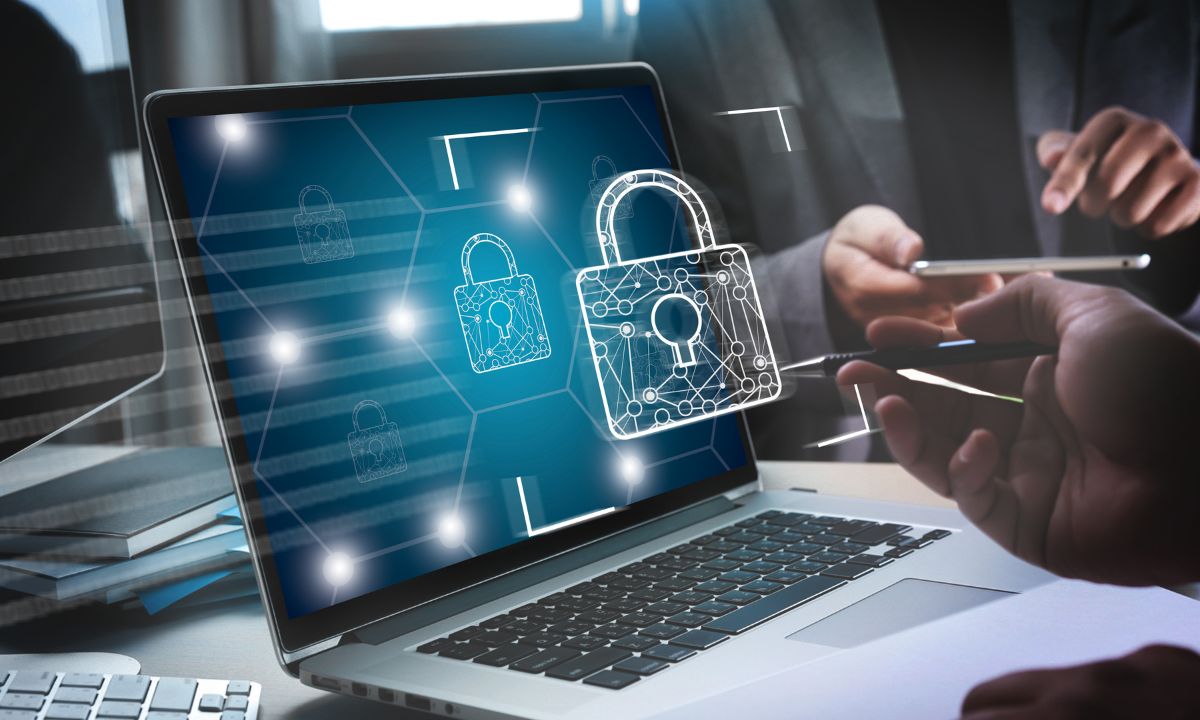Wooden Spoon: Blog

The Importance Of Digital Security Practices In The Workplace
In today’s rapidly evolving digital landscape, where technology plays a pivotal role in business operations, the importance of teaching your staff good digital security practices cannot be overstated. Cyber threats have become more sophisticated, posing significant risks to organizations of all sizes. It’s no longer enough to rely solely on advanced security systems and protocols; your employees must be equipped with the knowledge and skills to defend against potential attacks.
A well-informed staff can effectively protect sensitive data from breaches, avert potential cyber attacks, and minimize the impact of security incidents. Moreover, teaching your employees good digital security practices helps to strengthen password security, recognize social engineering techniques, and promote secure email communication.
By prioritizing digital security training, you lay the foundation for a resilient and proactive workforce. It’s not just about implementing technical safeguards; it’s about creating a culture of responsibility where every employee understands their role in safeguarding the organization’s digital infrastructure.

Understanding the Risks
To effectively teach your staff good digital security practices, it is crucial to first help them understand the risks they face in the digital realm. Cyber threats come in various forms, ranging from phishing attacks and malware to ransomware and social engineering tactics.
By educating your employees about these risks, you empower them to recognize and respond appropriately, minimizing the potential damage to your organization. They will understand that their actions and decisions can directly impact the security posture of the entire company.
Data breaches, in particular, can have severe consequences for businesses, including financial loss, reputational damage, and legal liabilities. By emphasizing the potential impact of data breaches, you can instill a sense of urgency and responsibility among your staff.
Highlighting real-world examples of cyber attacks and their repercussions can serve as eye-opening illustrations of the risks involved. Additionally, sharing statistics and industry trends can help convey cyber threats’ prevalence and evolving nature.
Raising awareness about the risks lays the foundation for a proactive approach to digital security. Your employees will understand the importance of staying vigilant, adhering to security policies and procedures, and reporting any suspicious activities promptly.
The next sections will delve into specific digital security practices that will empower your staff to mitigate these risks effectively and contribute to a secure working environment.
Protecting Sensitive Data
One of the primary objectives of teaching your staff good digital security practices is to emphasize the importance of protecting sensitive data. In today’s data-driven business landscape, organizations possess a wealth of valuable and confidential information that must be safeguarded against unauthorized access or exposure.
By educating your employees about secure data handling practices, you teach them to handle sensitive information responsibly. This includes understanding data classification based on sensitivity and implementing appropriate security measures accordingly.
Training sessions can cover topics such as data encryption, secure file-sharing methods, and the importance of regularly backing up data. Employees should be aware of the potential risks of mishandling data, such as accidental disclosure or data leakage.
Furthermore, phishing attacks continue to be a significant threat to organizations. Educating employees on the dangers of phishing and providing practical tips to identify and report suspicious emails or websites can help prevent data breaches and unauthorized access to systems.
Good digital security practices also encompass the importance of strong passwords. Employees should be educated on creating unique and complex passwords and the need for regular password updates. Encouraging the use of password managers can simplify this process and enhance password security across the organization.
By fostering a culture of data protection, your staff becomes actively involved in minimizing the risks associated with sensitive information. Through ongoing training and reminders, you can ensure that data security remains a top priority for every employee, contributing to the overall resilience of your organization.
Strengthening Password Security
Passwords serve as the first line of defense against unauthorized access to accounts and sensitive information. Teaching your staff good password security practices is essential for bolstering overall digital security.
Firstly, emphasize the significance of using strong, unique passwords. Employees should understand that weak passwords are easily guessable or susceptible to brute-force attacks. Encourage the use of long passwords that combine upper and lowercase letters, numbers, and special characters. Remind them to avoid common phrases, personal information, or easily guessable patterns.
To alleviate the burden of memorizing multiple complex passwords, recommend the adoption of password managers. These tools securely store passwords, generate strong ones, and automatically fill them in when needed. Educate employees on password managers’ benefits and proper usage to simplify their password management process.
Regular password updates are equally crucial. Encourage staff to change their passwords periodically, particularly after any suspected security incidents or data breaches. Remind them to avoid reusing passwords across multiple accounts to prevent a domino effect if one account is compromised.
Two-factor authentication (2FA) should be strongly encouraged as an additional layer of security. Explain the concept of 2FA and guide employees on enabling it for their accounts. This ensures that even if passwords are compromised, unauthorized access is still thwarted.
Lastly, emphasize the importance of keeping passwords confidential. Employees should understand the risks associated with sharing passwords, writing them down, or storing them in unsecured locations. Promote a culture of accountability and responsible password management within your organization.
By educating your staff on password security best practices, you enhance the resilience of your organization’s digital infrastructure and reduce the likelihood of unauthorized access or data breaches.

Email Security Best Practices
Email continues to be a primary communication channel in most workplaces, making it a prime target for cyber attacks. Teaching your staff good email security practices is crucial for protecting sensitive information and preventing data breaches.
Start by highlighting the vulnerability of email to various threats, including phishing, spear-phishing, and email spoofing. Explain the tactics used by attackers, such as creating deceptive emails that mimic legitimate sources or employing social engineering techniques to manipulate recipients.
Educate your staff on the importance of verifying the authenticity of email senders before responding or clicking on any links or attachments. Remind them to carefully scrutinize email addresses, look for signs of phishing (e.g., misspellings, grammatical errors), and cross-check any suspicious requests through alternative means of communication.
Encourage the use of encrypted email services or encryption tools to ensure the confidentiality of sensitive information during transmission. Teach employees how to recognize and handle encrypted emails appropriately.
Promote caution when opening email attachments. Instruct employees to scan attachments with reliable antivirus software before opening them and to never open attachments from unknown or suspicious sources.
Regularly remind your staff to avoid sharing sensitive information via email unless absolutely necessary. Encourage them to use secure file sharing platforms or encrypted channels for transmitting confidential data.
By instilling good email security practices, you empower your staff to become the first line of defense against email-based threats. Ongoing training and reminders will help reinforce these practices and cultivate a culture of email security awareness within your organization.
Securing Personal Devices
The Bring Your Own Device (BYOD) trend has gained popularity in many workplaces, offering flexibility and convenience. However, it also introduces security risks that must be addressed. Teaching your staff good digital security practices for their personal devices is crucial to protect both their data and your organization’s sensitive information.
Educate employees about the risks associated with using personal devices for work purposes. Emphasize the need for device encryption to safeguard data stored on their smartphones, laptops, or tablets. Encourage the installation of reliable security software, such as antivirus and anti-malware applications, and regularly update them to ensure protection against the latest threats.
Advise employees to exercise caution when connecting to public Wi-Fi networks, as these networks are often unsecured and susceptible to eavesdropping. Encourage the use of virtual private networks (VPNs) to establish secure connections when accessing company resources remotely.
Establish clear policies and guidelines for the use of personal devices in the workplace, outlining acceptable usage, security requirements, and procedures for reporting lost or stolen devices. Regularly remind employees to lock their devices with strong PINs or passwords and enable biometric authentication when available.
Consider implementing mobile device management (MDM) solutions that allow for centralized control and security management of employees’ personal devices used for work purposes. MDM solutions enable features such as remote data wiping, enforcing device encryption, and enforcing security policies.
By promoting good digital security practices for personal devices, you mitigate the risks associated with BYOD and create a more secure working environment. Your employees will understand their role in protecting their devices and the data they access, ultimately enhancing your organization’s overall digital security posture.
Want to learn how to protect your business or seek help managing and securing your systems and networks? Contact Wooden Spoon today to see how we can help!






